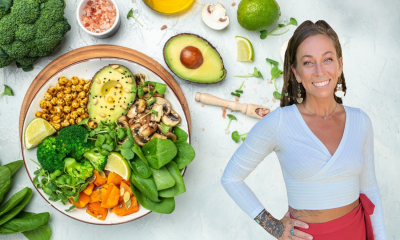Economy
Annual San Bernardino County Economic Outlook Sees Heated Growth In Near-Term Future; Labor Market Remains A Key Stumbling Block

Downtown Revitalization: ‘A Major League Region With a Minor League Downtown’
By Kristin Lansdown, Editor at IEBJ
The diminished economic effects of the pandemic are becoming increasingly evident across California and the nation as businesses fully reopen and consumers return to activities that have been on hold for over a year. Still, the vigorous growth happening in many parts of the economy stands in sharp contrast to the experience of some workers and industries that still have a sustained climb out of the pandemic-driven crater they fell into.
A new report shines a bright light on the robust but somewhat uneven trajectory the recovery has taken in San Bernardino County.
Released at the 5th annual San Bernardino County Economic Forecast Conference, the report, finds that the County’s housing market is booming and much of its taxable sales and business activity surging – all against a backdrop of shrinking COVID-19 cases and rising vaccination rates.
Similar to other regions, housing emerged as the brightest spot in the County’s economy last year and is flourishing in 2021. From the first quarter of 2020 to first quarter of 2021, the median single-family home price in San Bernardino County soared 18%, stronger than in Los Angeles (17.8%), Orange (12.2%), and San Diego (15.4%) Counties, although behind Riverside County (21.4%).
“The driving pressure here is clear cut – demand for housing has increased markedly but supply has not,” said Taner Osman, Research Manager at the UC Riverside School of Business Center for Economic Forecasting and one of the report’s authors. “It’s an intensely competitive period where offers have soared far above asking prices and buyers are waiving inspections and other contingencies to get a leg up.” However, if fears of inflation are realized, mortgage rates are also likely to jump, which could sap some of the momentum from the market, said Osman.
Broadly, despite the recent price increases, the Inland Empire remains one of the last relatively affordable housing markets in Southern California, which bodes well for long term growth, according to the report.
Looking across the Inland Empire, commercial real estate has displayed more of the unevenness that has characterized the pandemic recession. While demand for office and retail space has fallen over the past year, as e-commerce spending has surged, warehouse properties have become hotter commodities. The vacancy rate among warehouse properties in the Inland Empire fell to 9.7% in the first quarter of 2021 even as 10 million square feet of new space was added to the region’s available stock. At the same time, asking rents increased, albeit modestly.
The weaker performance in the economy, both in San Bernardino County and across the state, comes from the labor market. The County has only recovered about 60% of the jobs lost due to the pandemic’s health-mandated closures and restrictions, according to the report. The largest losses continue to be in the battered Leisure and Hospitality sector, which was turned on its head both locally and across the globe. However, with businesses returning to normal operations, this and other damaged sectors such as Retail Trade, Government, and Manufacturing, should experience significant job gains as companies ramp up production to meet surging consumer demand in the coming months.
In addition to the local outlook, the forecast conference also included a deep dive into the future of downtown San Bernardino and how insight-driven economic development can propel the creation of a revitalized, modern, and successful downtown. Presenter Patrick Adler, who is Manager of Sustainable Growth and Development at the Center for Forecasting, highlighted the fact that San Bernardino, despite having a population twice the size of a city such as Milwaukee, lacks the kind of dynamic, vibrant, and centralized urban core that comparative areas have established.
Calling San Bernardino, a ‘major league region with a minor league downtown’, he argued that the city needs to jumpstart a downtown renaissance by recruiting anchor firms and housing developments to the downtown core. “Once San Bernardino achieves minimal density in the core, the city will be able to market itself as a destination for visitors and residents alike,” said Adler.
Presented by the Inland Empire Regional Chamber of Commerce, the 5th annual San Bernardino County Economic Forecast Conference: Back To Business, was held on June 24th at The Enterprise Building in San Bernardino. The event convened government and business leaders from across the region and beyond.
Business
Economist Christopher Thornberg, State Treasurer Fiona Ma Headline New Forecast Conference

Coming October 5th
Economic Horizon 2024: What Lies Ahead?
The Inland Empire Regional Chamber of Commerce, in collaboration with Beacon Economics and the County of San Bernardino, is thrilled to announce that the anticipated economic forecast conference, Economic Horizon 2024: What Lies Ahead, Inland Empire? will be held October 5th from 3:30 PM to 6:30 PM at the El Prado Golf Courses in the vibrant city of Chino, California.
Esteemed economist, Dr. Christopher Thornberg will present complete outlooks for the U.S., California, and Inland Empire economies. “The Inland Empire stands at the crossroads of remarkable economic opportunities and challenges,” said Thornberg. “I’m excited to unpack the trends and shifts that will define the region’s economic landscape in the next year, and beyond.”
Known for his razor-sharp observations, and fun, energized delivery, Thornberg’s presentation will include pointed discussions about inflation, the Fed’s next move, housing markets, strengths and instabilities in the economy, and what current trends mean for the nation, state, and local region.
The conference will also be graced by the insights of California State Treasurer Fiona Ma as keynote speaker. In her words, “The strength of California’s economy is deeply interwoven with the growth trajectories of its regions. The Inland Empire, with its dynamism and resilience, is a testament to this synergy. I am honored to join ‘Economic Horizon 2024’ and share a vision where policies, partnerships, and potentials converge to elevate the Inland Empire to unprecedented economic heights.”
“This conference is a testament to the collaborative spirit of the Inland Empire and our commitment to fostering a robust, resilient economy,” said Edward Ornelas, Jr., President of the Inland Empire Regional Chamber of Commerce. “Our partnership with Beacon Economics and the County of San Bernardino aims to offer a platform for profound economic discussion, forecasting, and strategic future planning.”
Attendees can anticipate not only expert insights into the economy but also networking opportunities and a chance to connect with key business, government, and nonprofit leaders from across the region.
Full event details are available at: economy.iechamber.org
Economy
The Recession That Didn’t Happen… And Why Most Forecasters Got It Wrong
Bizz Buzz
Workforce Development Earns National Achievement Awards

#bizzbuzz
Inspired by the Board of Supervisors’ commitment to meet the needs of employers and jobseekers and foster a vibrant local economy, the San Bernardino County Workforce Development Department has been honored with eight 2023 Achievement Awards from the National Association of Counties (NACo).
Among the services and initiatives for which WDB was honored were the Rapid Response Community Resource Fair, Economic Recovery Business Outreach Program and, in partnership with the Public Defender’s office, the Record Clearing, Resource and Employment Fairs.
Thanks to strong and stable leadership and policy direction from Board of Supervisors Chair Dawn Rowe and her colleagues on the Board of Supervisors, San Bernardino County received a record-breaking 160 NACo awards this year. The awards reflect the Board’s efforts to cultivate the innovation that leads to the development of outstanding public service programs.
The NACo awards recognize the best of the best among county governments across the U.S. Nationwide, 40,000 county elected officials and 3.6 million county employees provide important services, such as caring for our physical and mental health, maintaining roads, ensuring public safety, strengthening environmental stewardship, administering elections and much more.
“The Workforce Development programs and services recognized by NACo highlight the extraordinary work being done by Workforce Development to enhance career opportunities for our residents and help businesses grow,” Rowe said.
The first Rapid Response Community Resource Fair was developed shortly after United Furniture Industries (UFI) abruptly laid off more 300 employees in the High Desert without advance notice just days before Thanksgiving 2022. When Workforce Development was alerted, staff quickly mobilized businesses and community partners to help connect those laid off to available employment opportunities, as well as various other community resources. Approximately 275 of the affected UFI employees were offered new employment opportunities as a result.
The Economic Recovery Business Outreach Program was a pilot program that tapped into the wide-reaching business network of chambers of commerce. This collaboration between WDB and various chambers of commerce throughout the county was designed to leverage the relationship between chambers and small businesses to build awareness and accessibility to Workforce Development services available to them. Outcomes as a result of this partnership include various successful services including job listings, job fairs, positions filled, and job training assistance, among others.
Perhaps the most impactful program receiving this recognition is the Record Clearing, Resource and Employment Fairs. Workforce Development and the Public Defender’s Office have partnered with businesses and community organizations to increase economic access and equity. The partnership was designed to bring critical resources directly into the community – to churches, community centers, community colleges, and America’s Job Centers – for those looking to remove barriers and increase their access to employment opportunities and other services. The Public Defender helps participants by providing expungement or record clearing services, and Workforce Development brings employers with job opportunities, all within the same location. The events have been well received and proven useful to the community, making this a long-term partnership, not only between Workforce Development and the Public Defender’s office but a long list of other community organizations that have also participated.
“Our team and board feel fortunate to be recognized for these awards,” said William Sterling, chairman of the Workforce Development Board. “The underlying factor of the programs being recognized are partnerships. We feel fortunate for our staff and the relationships developed with other departments and organizations and the impact these services have had within our communities, which is at the core of what public service is supposed to be.”
-

 Opinion1 month ago
Opinion1 month agoSurge in Unemployment Among California Youth Linked to Minimum Wage Hikes
-

 Commercial Real Estate Transactions3 weeks ago
Commercial Real Estate Transactions3 weeks agoSRS Real Estate Partners Announces Record-Breaking $6.15 Million Ground Lease Sale of a New Construction Chick-fil-A Property in Murrieta, California
-

 Health & Wellness3 weeks ago
Health & Wellness3 weeks agoBuddha Bars: A Mother’s Innovative Solution to Healthy Snacking
-
By Press Release1 week ago
California Employment Expansion Continues But Still Trails Nation









